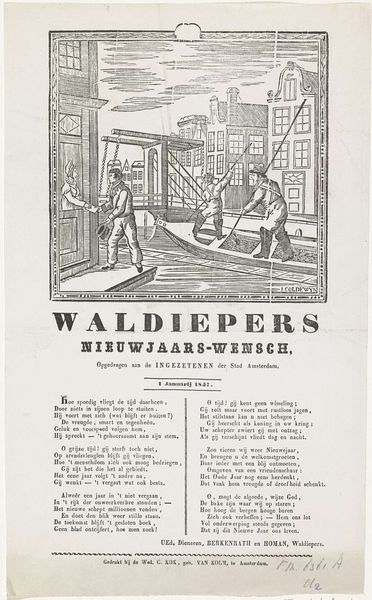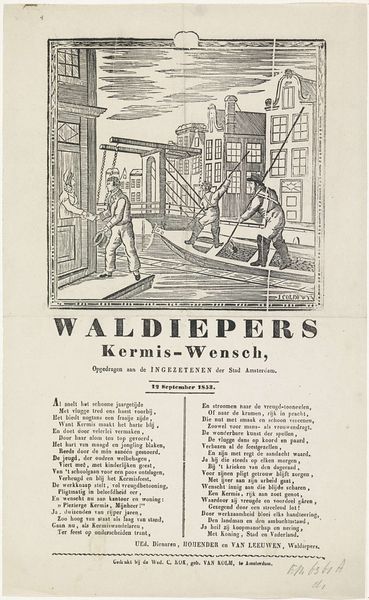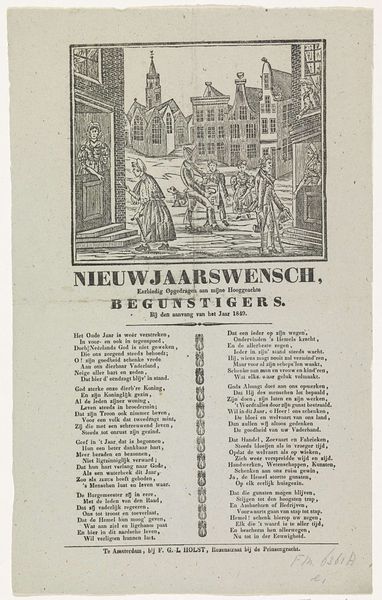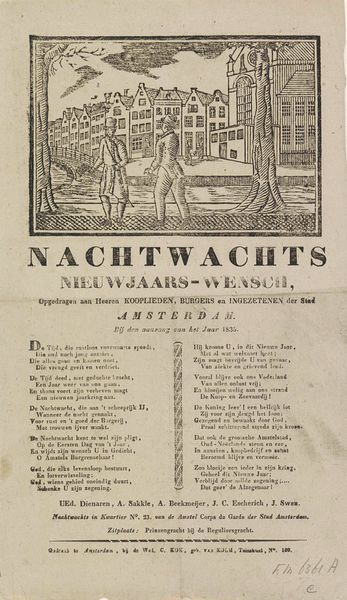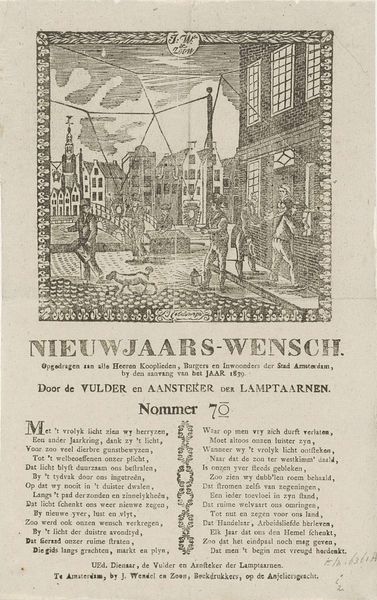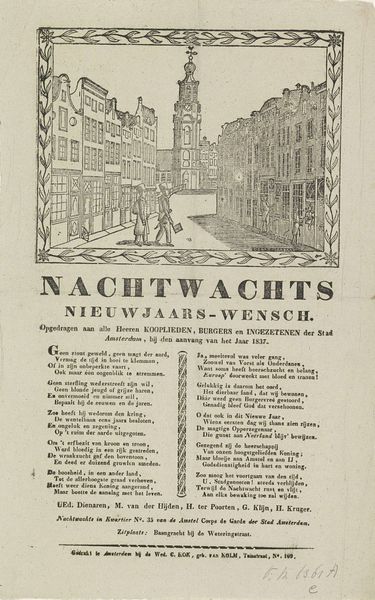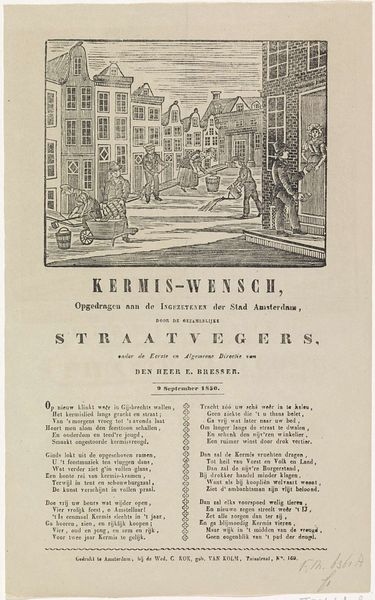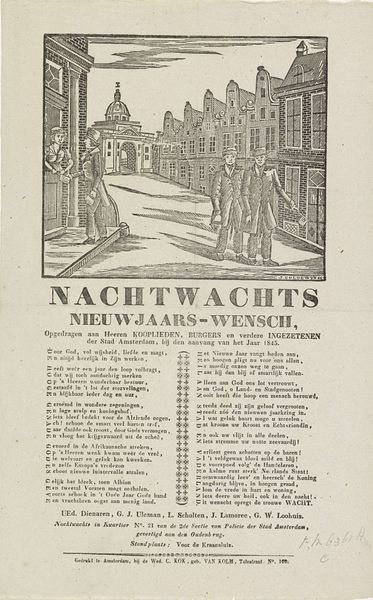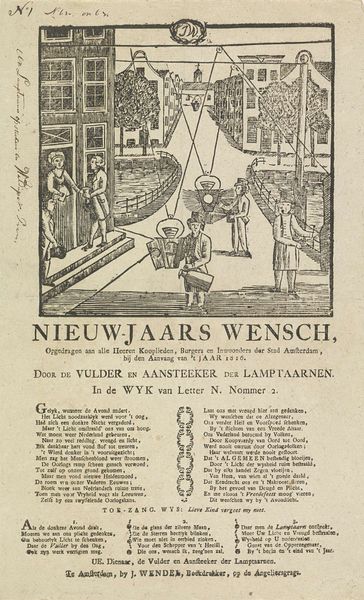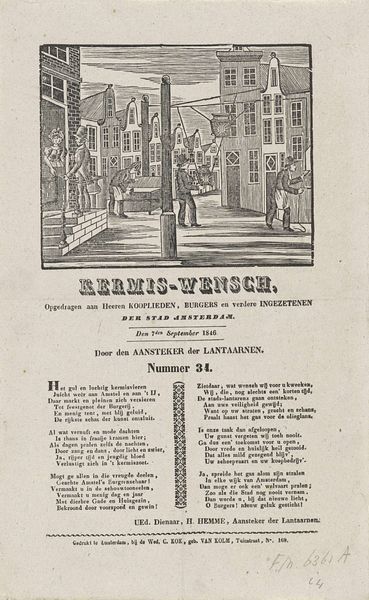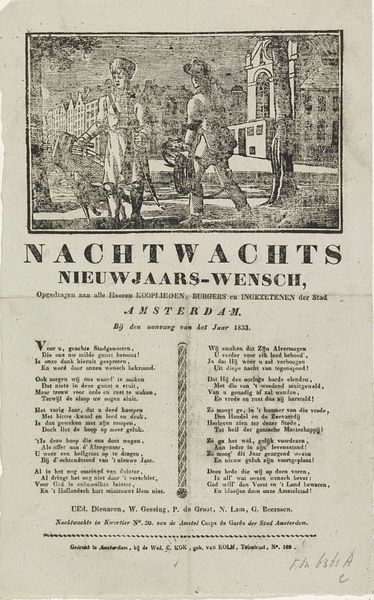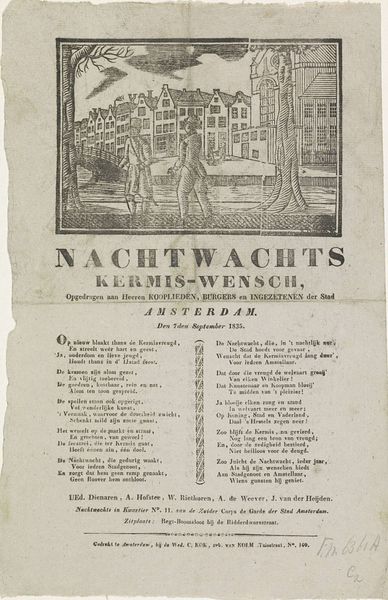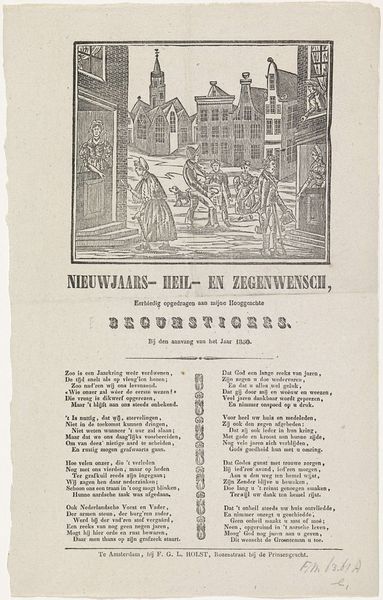
Nieuwjaarswens van de Amsterdamse waldiepers voor het jaar 1822 1821 - 1822
0:00
0:00
print, engraving
#
aged paper
# print
#
landscape
#
cityscape
#
engraving
Dimensions: height 334 mm, width 207 mm
Copyright: Rijks Museum: Open Domain
Curator: Here we have an engraving titled "Nieuwjaarswens van de Amsterdamse waldiepers voor het jaar 1822," which translates to "New Year's Wish of the Amsterdam Mudflat Runners for the Year 1822." It was created around that time. Editor: It's remarkable how much detail is packed into such a small, monochrome print! There’s a strange warmth emanating from the quaint depiction of Amsterdam's canals. Curator: Yes, it presents an interesting intersection of industry, community, and civic life. The “waldiepers,” or mudflat runners, were responsible for tasks like cleaning canals and, in this case, delivering New Year's greetings on behalf of their district to merchants and residents. Note how the tools suggest the specific types of labor they engage in. Editor: From a purely compositional point of view, I’m struck by the framing of the urban landscape. The workers pulling up waste seem dwarfed in comparison to the rows of picturesque buildings in the background. Is there some sort of social commentary in play? Curator: Perhaps. You see, this print wasn't just a picturesque view; it was also a form of advertisement and social positioning. The waldiepers offered a vital, if unpleasant, service. By commissioning this engraving, Jan Minbergen signals their place within Amsterdam society and their contribution to its functioning. Editor: I do wonder, however, if this is a kind of idealized view. The detail is clean, uniform, and lacks shadows. Is that just a result of it being a print medium of the time or something else? The poem at the bottom appears to contribute to the overall pleasant tone, which contrasts oddly with the physical labor occurring within the landscape depicted at the top. Curator: Indeed. The cleanliness might indicate their commitment to contributing to the urban beautification of Amsterdam or perhaps to elevate themselves and to be well regarded in the city. Consider too the means of production: a printing press owned by J. Wendel en Zoon mass-producing what is also a work of artistry and labor in its own right. Editor: It is definitely fascinating how a simple print encapsulates so many different strata of urban life back in the early 19th century! Curator: It truly gives us insight into the commerce, social status, labor, and artistic processes circulating throughout that society, a visual representation and intersection of it all.
Comments
No comments
Be the first to comment and join the conversation on the ultimate creative platform.
